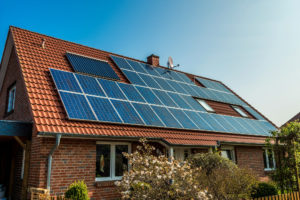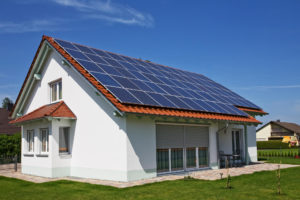The adoption of solar energy is rising as individuals and businesses embrace renewable energy solutions. However, before installing a solar system, conducting a solar site survey is crucial to ensure optimal performance and efficiency. This comprehensive guide will delve into the importance of solar site surveys, the site survey process, and best practices for maximizing energy production and system design.
Contents
Key Takeaways
- Conducting a thorough solar site survey is essential to assess the feasibility of a solar project and optimize system design.
- Solar site surveys evaluate roof condition, shading, and solar resource availability to maximize energy production.
- Engaging a professional site surveyor and performing regular site surveys contribute to a solar system’s long-term performance and efficiency.
Understanding Solar Site Surveys
The Basics of Solar Site Surveys
Before embarking on a solar installation project, it’s essential to grasp the fundamentals of solar site surveys. A solar site survey is a thorough assessment of the intended installation location, evaluating factors such as roof condition, shading, and overall solar resource availability. By analyzing these elements, solar installers can determine the feasibility of a solar project and devise an effective system design.
A solar site survey is a critical step in the solar installation process as it provides crucial insights into the site’s suitability for solar panels. By evaluating the roof condition, shading potential, and solar resource availability, installers can make informed decisions regarding system design and optimization. A thorough site survey also helps identify potential challenges or obstacles that may impact energy production and system performance. Understanding the basics of solar site surveys empowers solar project owners to make well-informed decisions and maximize the benefits of their solar installations.
The Solar Site Survey Process
Step-by-Step Guide to Perform a Solar Site Survey
Performing a solar site survey involves several key steps. It starts with gathering relevant information about the site, including its location, roof orientation, and historical energy consumption. This data helps solar installers customize the system to meet specific requirements. Once the initial data is collected, an on-site visit is conducted to assess various factors.
During the on-site visit, a solar surveyor carefully examines the roof condition, noting any signs of damage, leaks, or structural issues. Accurate roof measurements are taken to determine the available space for solar panels and ensure proper system design. Additionally, the surveyor assesses the roof’s tilt and orientation to maximize solar energy capture throughout the day.
To evaluate shading potential, the surveyor analyzes the surrounding environment for any obstructions that could cast shadows on the solar panels. This includes nearby buildings, trees, or chimneys. By utilizing advanced tools and conducting shade analysis, the surveyor can generate detailed reports highlighting shading patterns at different times of the day and throughout the year. This valuable information enables solar installers to position the solar panels and optimize energy production strategically.

Analyzing Shading and Solar Resource
Shading and solar resource analysis are crucial components of a solar site survey. These assessments provide valuable insights into the potential energy production of the solar system.
Performing a Shade Analysis
Shading analysis involves identifying potential obstructions, such as nearby buildings, trees, or chimneys, that may cast shadows on the solar panels. Through advanced tools and techniques, surveyors create shade analysis reports, indicating the shading patterns throughout the day and year. This analysis enables solar installers to optimize panel placement, mitigate shading effects, and maximize energy production.
The shade analysis process begins with a comprehensive assessment of the site’s surroundings. The surveyor accurately measures shading angles and identifies potential shading sources using state-of-the-art tools such as solar path finders or 3D modeling software. By creating a detailed shade analysis report, solar installers can determine the optimal positioning of solar panels to minimize shading impacts and optimize energy output.
Evaluating Solar Resource
Evaluating solar resource availability is another vital aspect of a solar site survey. By considering factors such as the site’s latitude, climate, and local weather patterns, surveyors can determine the solar energy potential of the location. This data is then utilized to calculate the expected energy production and design an appropriately sized PV system.
During the solar resource evaluation, surveyors analyze historical weather data, including solar radiation levels, to gauge the site’s solar energy potential. This assessment provides critical information about the expected solar irradiance, enabling solar installers to estimate the system’s energy production accurately. Solar project owners can make informed decisions regarding system sizing, energy output expectations, and potential financial savings by understanding solar resource availability.

Maximizing Solar System Installation
Utilizing Site Survey Data
The data obtained from a solar site survey serves as the foundation for a successful solar system installation. This information plays a crucial role in system design and component sizing.
System Design and Component Sizing
By leveraging the site survey data, solar installers can design a system tailored to the specific site conditions. This includes determining the optimal number and placement of solar panels, selecting the appropriate inverter capacity, and integrating the system with the existing electrical panel. Accurate system design ensures maximum energy production and system efficiency.
Based on the site survey findings, solar installers can create a detailed system design that considers the site’s unique characteristics. They consider factors such as the available roof space, shading patterns, and solar resource potential to determine the optimal number and configuration of solar panels. The site survey data also guide the selection of the appropriate inverter capacity, ensuring efficient energy conversion and system performance. Furthermore, integrating the solar system with the existing electrical panel is a critical step in the design process, as it ensures seamless operation and compliance with electrical codes.
Electrical System Integration
Proper integration of the PV system with the existing electrical infrastructure is essential for seamless operation and safety. The site survey data guides the solar installer in coordinating with the electrician to ensure compliance with local electrical codes and regulations. This collaboration ensures a smooth interconnection between the solar system and the electrical grid.
During the electrical system integration phase, the site survey data serves as a reference for the electrician. It provides crucial information about the electrical panel’s capacity, wiring requirements, and any necessary upgrades or modifications. Following the site survey recommendations, the electrician can safely and effectively integrate the solar system into the existing electrical infrastructure. This seamless integration ensures efficient energy flow between the solar system and the electrical grid, maximizing the system’s performance and ensuring safety.

Site Survey Best Practices
Engaging a Professional Site Surveyor
To ensure accurate assessments and reliable data, it is recommended to engage a professional and experienced site surveyor. Their expertise in shade analysis, solar resource assessment, and system design is invaluable for achieving optimal results. Collaborating with a knowledgeable site surveyor throughout the project ensures a comprehensive and well-informed solar system installation.
A professional site surveyor brings specialized knowledge and experience to the table, ensuring accurate site assessments and precise data collection. They have expertise in utilizing advanced tools and techniques to perform shade analysis and evaluate solar resource availability. By engaging a professional site surveyor, solar project owners can gain valuable insights into their site’s solar potential and make informed decisions regarding system design and optimization.
Regular Site Surveys for Ongoing Monitoring
While a solar site survey is typically conducted before installation, regular site surveys can benefit ongoing monitoring and maintenance. Periodic assessments allow for identifying changes in shading patterns, roof conditions, or potential obstructions that may affect energy production. This proactive approach enables timely adjustments or optimizations to maintain optimal system performance.
Regular site surveys provide an opportunity to assess the long-term performance of the solar system and identify any changes or challenges that may impact its efficiency. By conducting periodic surveys, solar project owners can avoid potential issues, such as the growth of nearby trees or new construction that may cause shading. These site visits also offer an opportunity to assess the roof’s condition and identify maintenance needs. By regularly monitoring and evaluating the system, adjustments can be made to ensure continued optimal performance and maximize the return on investment.
Experience Solar Excellence with Us!
Trust in Solar Panels Network USA, where our seasoned experts deliver top-quality solar solutions for homes and businesses nationwide. With a legacy of countless successful installations and a commitment to sustainable energy, we’re your reliable partner in the solar journey. Ready for a brighter, eco-friendly future? Call us now at (855) 427-0058 and harness the power of the sun!
Conclusion
In the journey towards clean and sustainable energy, solar site surveys play a crucial role in ensuring the success and efficiency of solar installations. Solar installers can design and implement systems that maximize energy production by thoroughly assessing the site, analyzing shading, and evaluating solar resource availability. Engaging a professional site surveyor and utilizing their expertise further enhances the accuracy and reliability of the survey. Embrace the power of solar site surveys and go solar with confidence, contributing to a greener and more sustainable future.
Conducting a solar site survey is the first step toward a successful solar installation. With careful planning, accurate assessments, and professional guidance, you can harness solar energy’s full potential and positively impact our planet.
FAQ
What is a site survey in solar?
A solar site survey is a comprehensive location assessment to determine its suitability for solar panel installation. It evaluates roof condition, shading, and solar resource availability to optimize system design and maximize energy production.
How long does a solar site survey take?
The duration of a solar site survey depends on various factors, including the complexity of the project and the size of the site. Generally, a site survey can take a few hours to a full day to complete. Larger or more intricate installations may require additional time for a thorough assessment.
Which device is useful for a solar site survey?
Several devices are commonly used for solar site surveys, including solar path finders, 3D modeling software, and shading analysis tools. Solar path finders help measure solar resource availability and analyze shading patterns, while 3D modeling software aids in system design and panel placement. These tools assist site surveyors in gathering accurate data and making informed decisions during the survey process.
About the Author
Solar Panels Network USA stands at the forefront of solar energy solutions, driven by a team of seasoned solar engineers and energy consultants. With over decades of experience in delivering high-quality solar installations and maintenance, we are committed to promoting sustainable energy through customer-centric, tailored solutions. Our articles reflect this commitment, crafted collaboratively by experts to provide accurate, up-to-date insights into solar technology, ensuring our readers are well-informed and empowered in their solar energy decisions.

